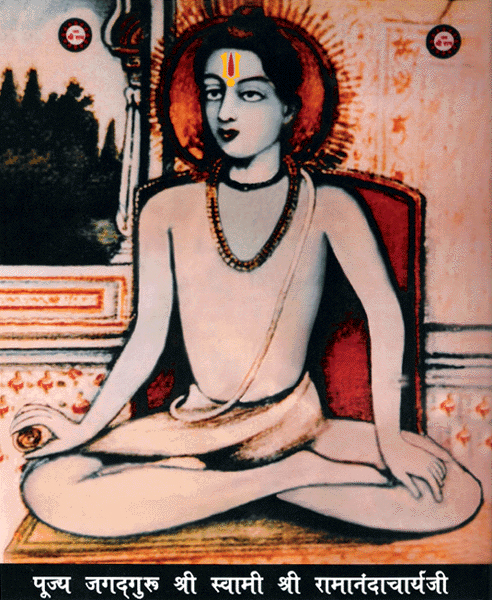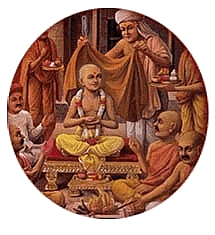
|
|
|
|
BY: SUN STAFF

Ramananda (1400 – 1476 A.D.) Jan 28, 2012 — CANADA (SUN) — A serial presentation of the Bhakti Movement's development in India. Ramananda was one of the most prominent preachers of Bhakti in northern India in the late 14th and early 15th centuries, and is considered one of the main figures responsible for spreading the Bhakti Movement. One of the primary differences between Ramananda and the earlier Bhakti acaryas, most importantly Lord Caitanya's line of Bhakti, is that Ramananda looked upon Rama, not Krishna/Vishnu as the object of bhakti. Ramananda preached that Lord Rama was the Supreme God who is to be worshiped with His consort Sita, and that liberation can only be achieved by worshipping Rama and through the repetition of His Holy Name. Thus he became known as the founder of the Rama cult in North India, within the framework of Vaisnavism. Ramananda, who is also referred to as Sant Ramanand or Swami Ramanand, is generally thought to have lived from 1400–1476 A.D., although there is some dispute about the dates. Likewise, there is disagreement about where he was born. Some scholars say that he lived in South India during the early part of his life, later settling in Banaras, thus he is considered to be the link between the South Indian Bhakti tradition and the North Indian Vaisnava Bhakti. Others suggest that he was born to an upper-caste Brahmin family at Triveni Sangam Allahabad, Prayaga, Uttar Pradesh, to parents named Sushila and Punyasadan Sharma. All seem to agree, however, that Ramananda left home at the age of twelve to take sannyasa, living at Varnasi for most of his life.
Ramananda's ashram in Varanasi became a powerful center of religious influence, from which his siddhanta was preached far and wide among all classes of Indians. One of the reasons for his great popularity was that he renounced Sanskrit, preferring instead to use the language of the local people. Often communicating in vernacular Hindi, Ramananda gained prominence as a social reformer. Though he himself was a brahmana, he ate food with his "low" caste Vaisnava followers, and accepted disciples from all castes. His most famous disciple was Kabir, who is himself considered a leading figure in the development of the Bhakti Movement. According to legend, Kabir originally hesitated to ask Ramananda to accept him as his disciple due to the rigid caste system in place at the time. Ramananda remained in his asrama all day, leaving only at 3:00 a.m. to go take bath in the Ganges and perform ablutions. Having knowledge of his daily habits, Kabir waited one night for Ramananda, lying on the steps of Panchganga ghat. When Ramananda accidentally stepped on Kabir on his way to take bath, he uttered "Utho! Rama ko Rama bolo!" (Rise up! Say Rama to Rama!). This became Kabir's sacred mantra, and he later accepted diksa from Ramananda. REFERENCES: The Founding of the Ramanandi Sect by Richard Burghard, London (1978)
| |
